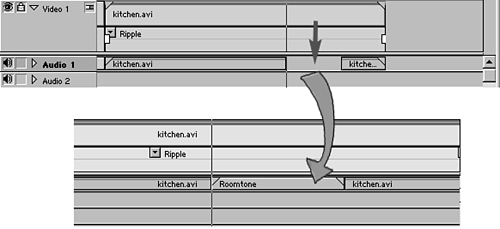Audio Tip of the Day: Room Tone
| Here is a piece of advice that someone taught me that might help improve your audio editing. Have you ever had to space out a clip or remove a portion due to an undesirable sound? If you have, you probably noticed something unnatural-sounding about the clip when you removed the bad portion. You'd think it would sound better, but it might still sound funny. This might be because (depending on what type of audio you're working with) it's unnatural to hear complete silence in the middle of your playback. Unless your recording took place in a soundproof booth, your audio probably has some type of background noise. You might not even realize it or pay attention to it unless it is suddenly gone. This background sound is often called room tone or natural sound. My advice to you is, whenever possible, record at least half a minute or more of room tone. Keep the camera or recording device rolling while no one is speaking. This piece of audio becomes a great filler for situations in which you need to remove a bit of audio without removing any video (so that you don't lose sync or create an unnecessary jump cut). Simply mark the portion that contains the hole, and edit in the room tone, as shown in Figure 8.30. This helps remove any undesirable sounds, fill that portion with "natural sound" to smooth the edit, and not draw any unwanted attention to an otherwise silent section of audio. I hope this helps you. Figure 8.30. Spaces left in audio tracks might sound very awkward if no other sound fills in that area. Audio dropping to complete silence is extremely noticeable in many cases.
|
